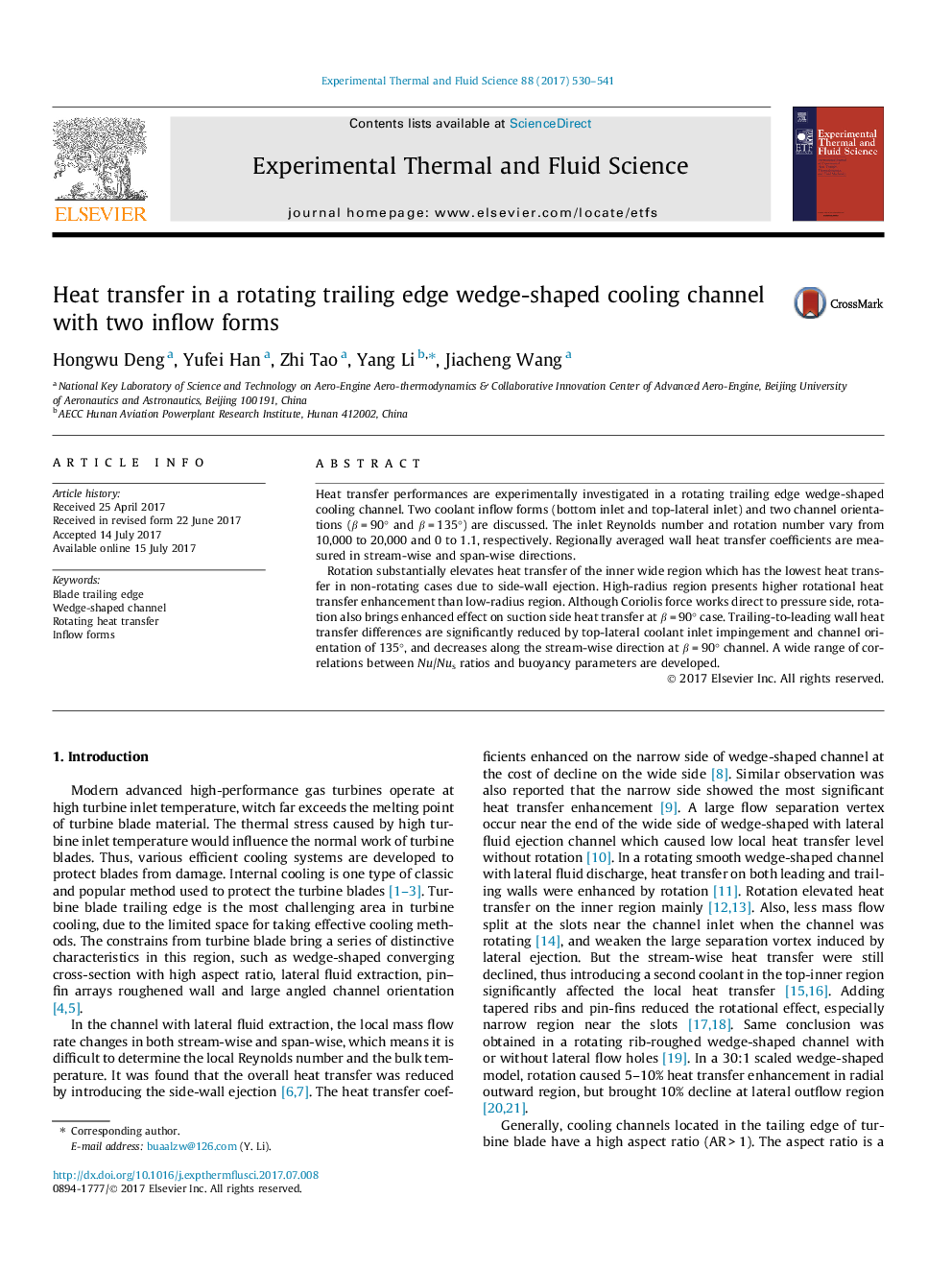| Article ID | Journal | Published Year | Pages | File Type |
|---|---|---|---|---|
| 4992606 | Experimental Thermal and Fluid Science | 2017 | 12 Pages |
â¢Bottom inlet and top-lateral inlet forms are introduced in wedge-shaped channel.â¢Effects of channel orientation on local and overall heat transfer are discussed.â¢Rotation presents stronger effect on high-radius region than low-radius region.â¢Correlations between Nu/Nus ratios and buoyancy parameters are developed.
Heat transfer performances are experimentally investigated in a rotating trailing edge wedge-shaped cooling channel. Two coolant inflow forms (bottom inlet and top-lateral inlet) and two channel orientations (β = 90° and β = 135°) are discussed. The inlet Reynolds number and rotation number vary from 10,000 to 20,000 and 0 to 1.1, respectively. Regionally averaged wall heat transfer coefficients are measured in stream-wise and span-wise directions.Rotation substantially elevates heat transfer of the inner wide region which has the lowest heat transfer in non-rotating cases due to side-wall ejection. High-radius region presents higher rotational heat transfer enhancement than low-radius region. Although Coriolis force works direct to pressure side, rotation also brings enhanced effect on suction side heat transfer at β = 90° case. Trailing-to-leading wall heat transfer differences are significantly reduced by top-lateral coolant inlet impingement and channel orientation of 135°, and decreases along the stream-wise direction at β = 90° channel. A wide range of correlations between Nu/Nus ratios and buoyancy parameters are developed.
